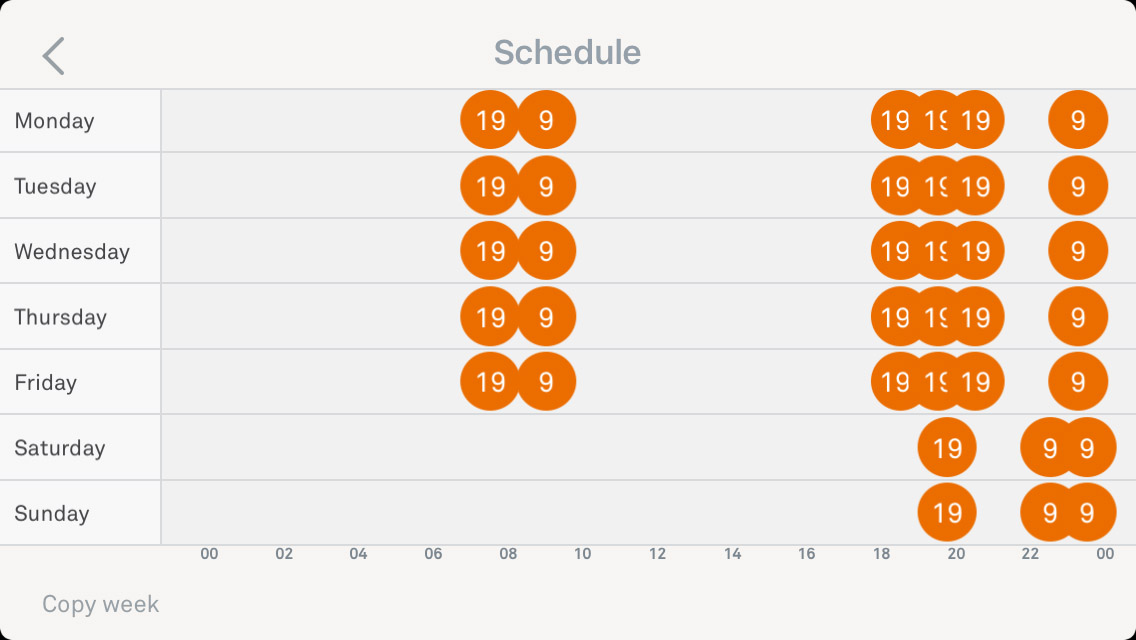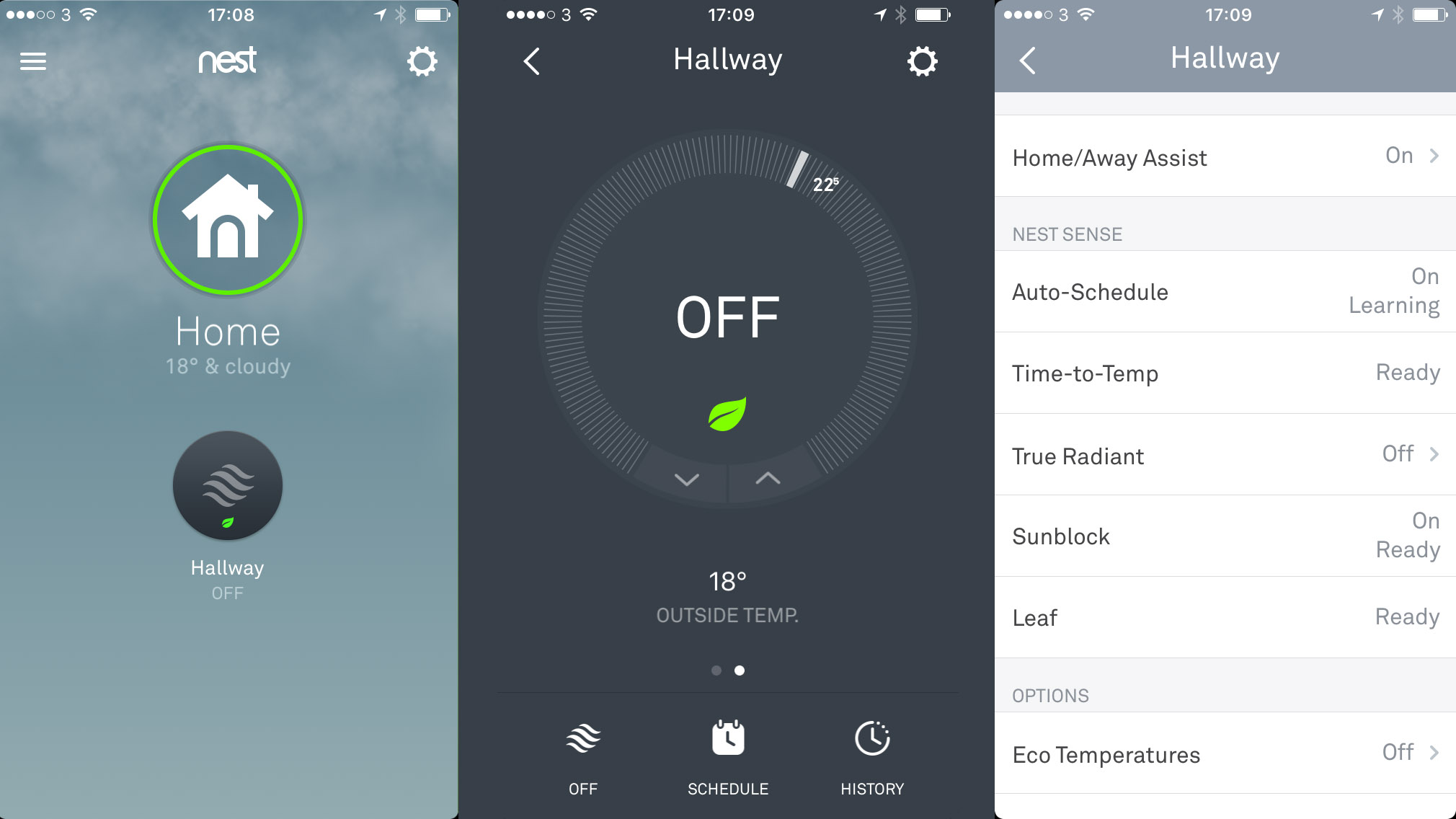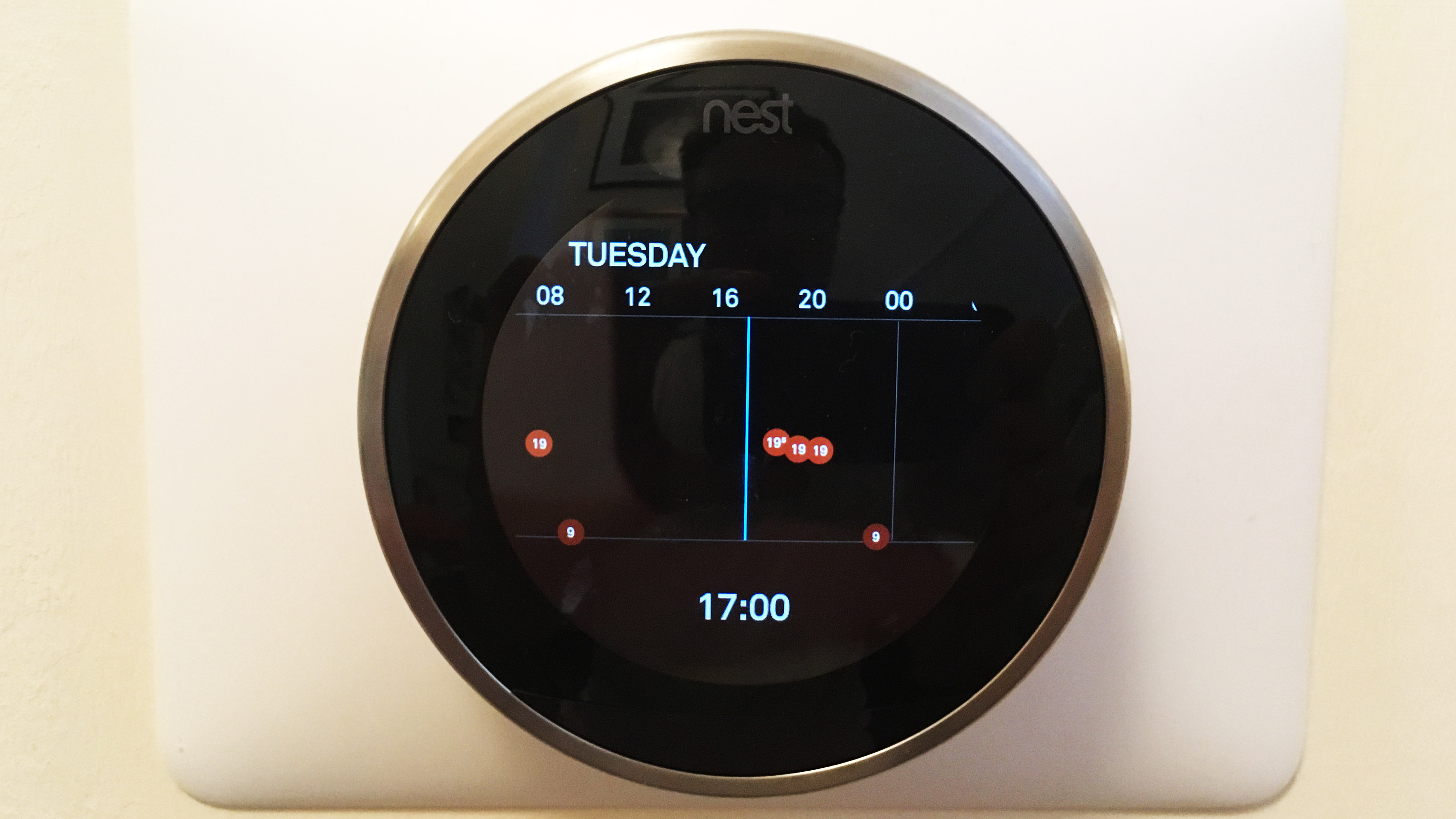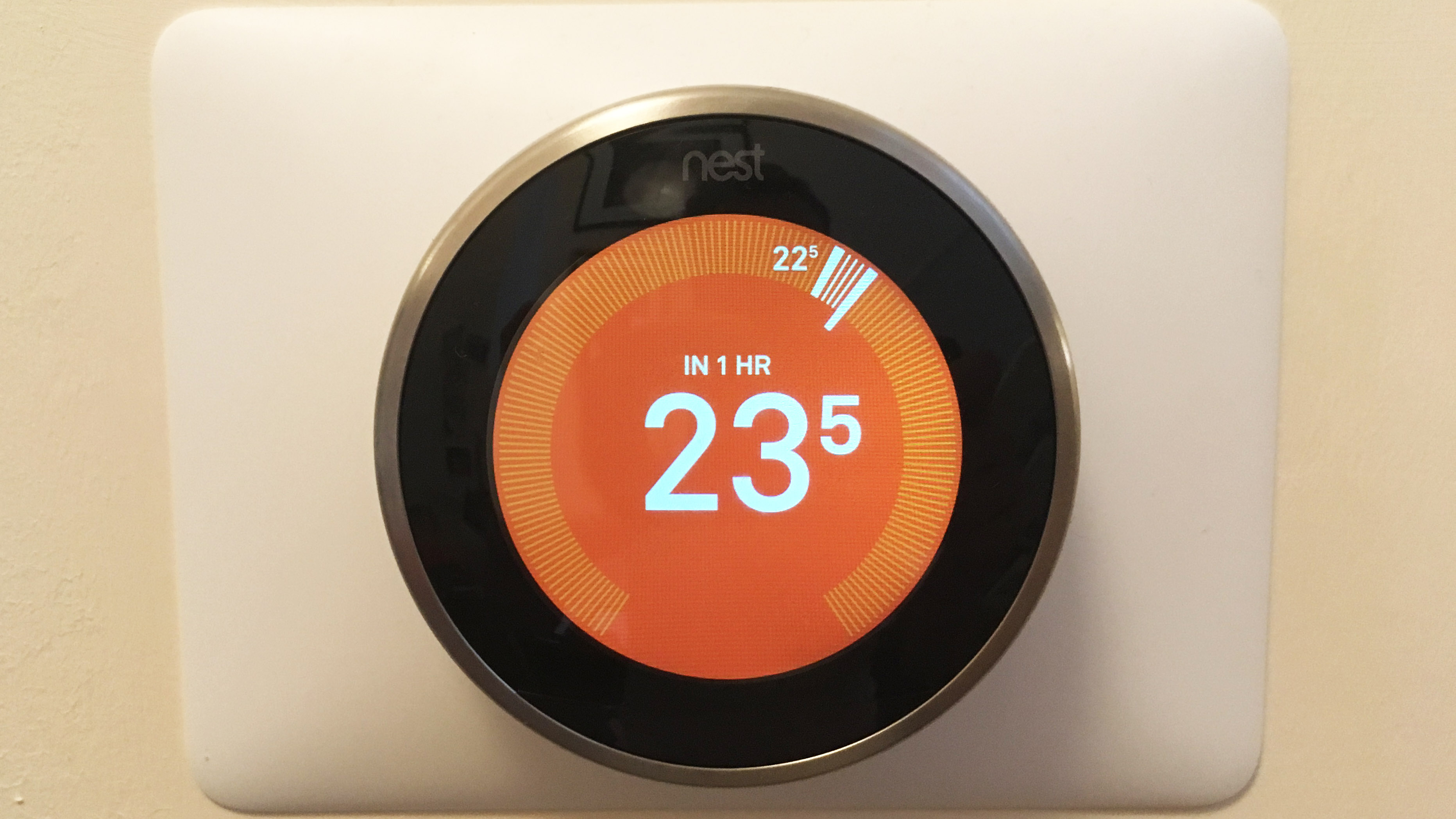Why you can trust TechRadar
Getting scheduled
Once you’ve got the thermostat set up it’s time to start building a schedule. This can be done from the thermostat itself, but you’ll have a much easier time if you use the app, which allows you to set temperatures for a specific day and them copy and paste them onto subsequent days of the week.
We went for a pretty conservative 19 degrees centigrade for all of our heating periods. Although it would have been possible to set, say, 18 degrees in the morning and 21 in the evening, we don’t imagine many people will care this much about this level of customisation.
Of course, if you want to you can ignore this scheduling element entirely and simply let the thermostat learn as you use it.

General use
Using its array of sensors, Nest adapts to the user's habits, avoiding heating a home when it is empty, learning how long it takes for your system to heat up and even allowing you to generate energy reports.
You can tell that the Nest has sensed movement because its screen will light up as you walk by. In our first couple of weeks of use this worked to remind us to set the temperature to our preferred level throughout the day, but over time the Nest turned into a handy little clock in the hallway where we had it installed.
The fact that we were able to have the Nest in our hallway allowed the thermostat to be much more effective than it would have been otherwise. In our home we were pretty much guaranteed to walk past the Nest as soon as we arrived, meaning it always had a pretty good idea of whether we were home or not.
If, however, you’ve got your thermostat in a side room that you rarely visit, then the Nest can occasionally think the house is empty and turn off the heating. Turning on the GPS fencing in the app is needed to fix this.

Our biggest problems with the Nest came from its lack of zonal heating control. Our thermostat was in a nice central location. This was perfect for picking up motion in the home, but it meant that the thermostat was in the hottest part of the house.
On more than one occasion the top floor was freezing cold because the Nest thermostat refused to turn on. It was a toasty 20 degrees centigrade downstairs, so why would it bother?
We tried to mitigate this problem by turning all the radiators on the lower floor down and all the radiators upstairs up, but ultimately it couldn’t fully solve the problem that the downstairs of our flat simply didn’t get cold enough to kick the Nest into action.
In the end we would set the Nest to a temperature that was a little higher than what we would have normally liked to make it turn on more often and heat the upstairs of our flat. It wasn’t the perfect solution, but it helped.
Energy savings
With a retail price of $249/£279, you’re ultimately buying the Nest Thermostat because you hope it’ll save you money in the long term. Nest claims that the thermostat will save you between 10 and 12% of your heating bill, but does this figure hold up under scrutiny?
After trying the thermostat out for a whole 12 months, we found that we used 13.5% less energy with the Nest than without, meaning that in our instance the thermostat would have paid for itself after around three years of use.
Unfortunately our flat is not equipped with a smart gas meter so we were unable to access granular data about our energy usage throughout the course of the year, but the general trends were apparent from our monthly meter readings.

We were a very frugal energy household before getting the Nest, so from the data it looks like the Nest turned on the central heating far earlier in the year than we would have chosen to. This meant that in November and December we actually used more energy with the Nest than without.
The savings, then, came when we moved into spring, where the Nest turned our central heating off far earlier than we would have thought to ourselves. The biggest difference in energy usage for us came in January.
That said, according to official Met Office data, 2016’s winter was 2 degrees centigrade warmer than 2015, which might explain at least some of the decrease in energy usage.
Every house and flat will be different, so it’s difficult to draw conclusive results from just a single sample, but we were pleasantly surprised. The fact that we were frugal with heating prior to getting the Nest, combined with the fact that it can’t control heating on a room-by-room basis, meant that we thought our energy consumption would be flat, or even worse with the smart thermostat.
However a reduction of 13.5% is promising, even if at least some of it can be explained by a warmer winter.
Jon Porter is the ex-Home Technology Writer for TechRadar. He has also previously written for Practical Photoshop, Trusted Reviews, Inside Higher Ed, Al Bawaba, Gizmodo UK, Genetic Literacy Project, Via Satellite, Real Homes and Plant Services Magazine, and you can now find him writing for The Verge.

